“Excessive workplace stress causes a staggering 120,000 deaths and results in nearly $190 billion in health care costs each year.” -Center for Workplace Mental Health
Worker Safety is usually defined as physical safety. Businesses invest substantial money into training programs, safety controls, Personal Protective Equipment (PPE) and pre screening services, but are they comprehensive? A major factor in worker safety is not a physical issue at all (though it certainly can have physical repercussions). Mental health disorders are on the rise, but thankfully so is our awareness and response to the issue. Covid, for all its faults, did bring light to mental health disorders, including chronic depression. When the threat of Covid forced us into isolation as a possible prevention method, the stress and loneliness exacerbated mental health issues by 40%. The result was a surge in suicides even more shocking than Covid deaths.
More than 45,000 people take their own life each year.
1 in 5, or more than 50 million, people suffer from a mental illness.
Mental health conditions affect your workforce in much the same way as physical injuries do---absenteeism becomes more frequent, productivity slows and the cost associated with employee healthcare increases. The good news is, just like with physical hazards, employers can reduce the risks that increase susceptibility to mental health disorders.
85% of employees say that work affects their mental health. This can come in the form of anxiety, depression, elevated stress levels, physical and emotional exhaustion and suicidal ideation.
One of the best steps an employer can take to combat mental health disorders is helping employees connect to the proper resources for addressing, managing and ultimately overcoming mental health conditions. An occupational health & wellness program can help employees recognize when they are working under stressful conditions and how they can properly address the source of stress or implement tactics to minimize work-related stress.
“Organizations see a return of $4 for every dollar invested in mental health treatment in improved health and productivity.” - National Safety Council
Are you….
- Giving employees tasks they are not sufficiently trained to do?
- Giving highly skilled employees remedial work that is below their skill level?
- Allowing toxic employees to have too much control or influence?
- Giving employees excessive amounts of work with insufficient time off?
- Allowing safety protocols to be ignored, putting workers in physical danger?
- Constantly threatening the job security of employees?
- Allowing other employees to take credit for another worker’s accomplishments?
- Only recognizing employees when they make mistakes?
- Restricting employees from having a voice in your processes?
While you may not be making any of the above demands/faux pas frequently (or even on purpose), when you add them up you may be leaving employees feeling anxious and wanting to avoid work altogether. It could also be a catalyst for some of your best employees finding work elsewhere.
1 out of 5 employees quit because of stress-Stress.org
To implement occupational health and wellness programs that can identify work-related stress and then omit or modify that source to protect worker health, contact Workplace Safety Screenings. Our team of experts in workplace safety can assess your work procedures to uncover any stress points that need to be addressed, as well as provide a health surveillance program that can recognize stress levels that could lead to physical and mental injury. Click here for more information on how to make mental health surveillance a part of your workplace safety program.

.png?width=500&height=500&name=Blue%20and%20White%20Classic%20Shield%20Financial%20with%20Star%20Logo%20Design%20(1).png)


